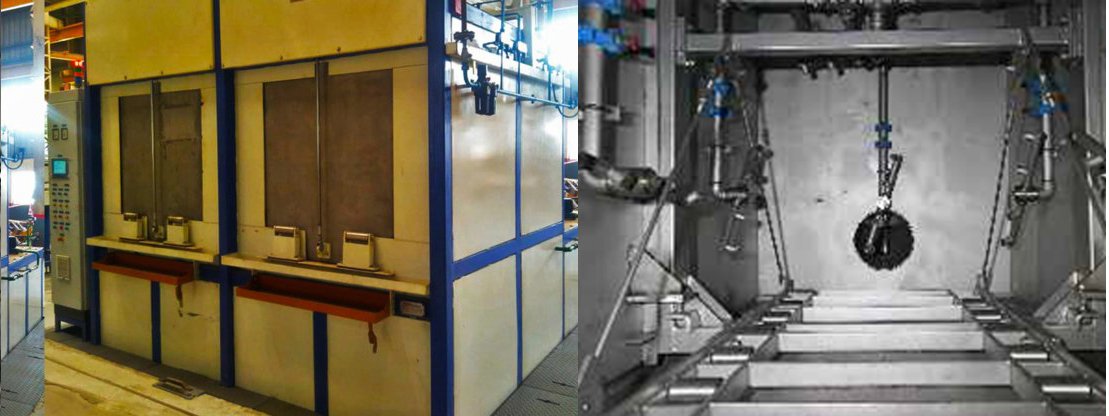
Flawlessly clean surfaces are the deciding factor for the quality of end-products when parts are to be heat treated.
1.Cleaning methods
Water based cleaning systems have met with general acceptance for parts cleaning before and after heat treatment. Due to reasons of environmental protection and cost, they have largely replaced the systems that work with halogenated hydrocarbons or cold cleaners(aromatic hydrocarbons).
In hardening plants, water based cleaning has proven itself to be the best cleaning method,from both the economical as well as ecological standpoints.
2.Cleaning agents
For the most part, demulsified systems have proven themselves in practice for cleaning with aqueous cleaning methods. Only these ensure allow oil-load in the washing solution, which prevents re-greasing of the parts.
3. Cleaning plants
Based on the various requirements in relation to throughput performance, cleaning quality,flexibility, and environmental protection, AICHELIN has developed numerous cleaning units and successfully commissioned them for our customers.
3.1 Submersion spray
Design characteristics
These patented units are used especially where highest levels of purity are required and / or geometrically complex components are to be cleaned.
The essential components include a vacuum tight cleaning chamber, isolated tanks for two(optionally: three) cleaning agents, vacuum pump, spray pump and heating for each agent and an oil separation unit.
3.2.1 Design characteristics
The cleaning cycle is dependent on the type and thickness of the soiling, the cleaning agent used and the desired degree of purity. A typical process could be undertaken as follows and is freely-programmable:
After pre-spraying the charge with the first cleaning agent, the container is filled with medium 1 and subsequently the low-pressure boiling process is started. After pressure is equalized, the chamber is emptied and the charge is sprayed again.
This cycle can be repeated with additional cleaning or rinsing fluids.
Afterwards the vacuum drying process is undertaken and the container is ventilated to remove the charge.
3.2.3 Low pressure boiling VACUPEARL
The patented Vacupearl system works by creating a vacuum above the bath level. This causes the cleaning fluid to start to boil and steam bubbles form predominately on the work piece surface of the charge.
This provides the following advantages:
In order to achieve a good cleaning effect, the operating temperature should generally be between 80 – 85° C. The charge will then have enough residual heat to be used to evaporate the water on the parts. Vacuum drying enable seven awkward areas, such as blind drill holes, thin lubrication holes and even suction chambers to be dried completely. Generally 0.1 – 0.3 % of the charge weight in water will stick to the work pieces. Vacuum drying allows up to 1 percent in weight of water to be dried off.
Absolutely dry components are required:
The agent tank is connected by means of cascades. The first agent tank has an overflow chamber, in which the demulsified oil-cleaner mixture flows, and is then pumped out with a separation pump to the coalescence separator
Cleaning Systems
(PDF |
989.93 KB |
eng-US )
